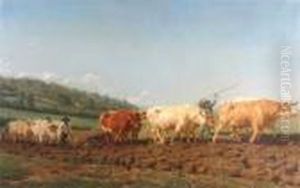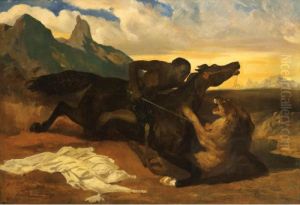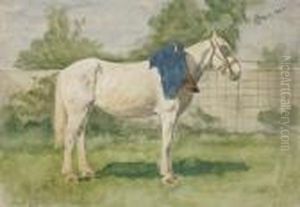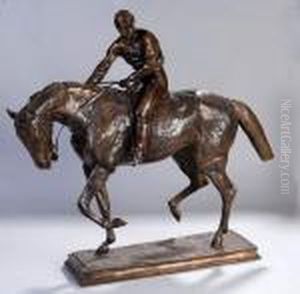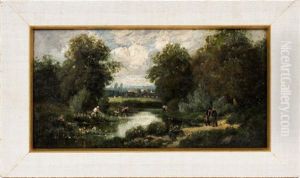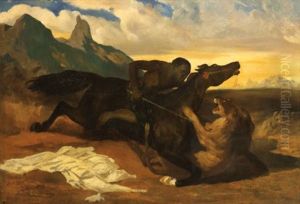Isidore Jules Bonheur Paintings
Isidore Jules Bonheur, born on May 15, 1827, in Bordeaux, France, was a distinguished 19th-century French sculptor, renowned for his animalier or animal sculptures. He was part of an artistically gifted family; his father, Raymond Bonheur, was a drawing teacher, and his sister, Rosa Bonheur, achieved fame as a painter and sculptor as well.
Isidore studied initially at the Ecole des Beaux-Arts in Paris and trained under the sculptor François Rude. He began exhibiting at the Paris Salon in 1848, where he would continue to showcase his work throughout his career. Bonheur's sculptures often reflected a realistic portrayal of animals, with a particular focus on domestic and wild species. His works displayed a keen observation of the anatomy and movement of the subjects he sculpted, which ranged from domestic cattle to wild animals like panthers and bears.
During his lifetime, Bonheur gained significant recognition and was awarded numerous medals at the Salon for his works. His sculptures appealed to a broad audience, including both European and American patrons. In 1865, he was awarded the Legion of Honour, which was one of the highest recognitions in France for his contributions to art.
Bonheur's approach to animal sculpture was part of a broader movement known as the Animalier School, which emerged in the early 19th century. This movement was characterized by artists who specialized in or were known for their animal subjects, and who portrayed them in a naturalistic style that was becoming increasingly popular at the time. Bonheur's works were praised for their lifelike quality and the sense of vitality he imbued in each piece.
Isidore Jules Bonheur's legacy includes a vast collection of bronzes that continue to be appreciated by art collectors and enthusiasts. His work can be found in many prestigious public and private collections worldwide. Bonheur passed away on November 13, 1901, in Paris, leaving behind a body of work that remains a testament to his skills as one of the foremost animalier sculptors of his time.
